Mr. Massyn
1980
In October sadly Mr. Pienaar suddenly passed away which led to the appointment of Mr. William Massyn in 1981.
1981
There was so much rain this year that furrows were dug so the reserve could drain.
1982
The northern side of the reserve burned. Proteas were planted out in the triangle by the “look out” picnic spot and the following year 300 Leucospermum cordifolium from the Western Cape were planted near the old nursery and following that 300 Gloriosa vitescens.
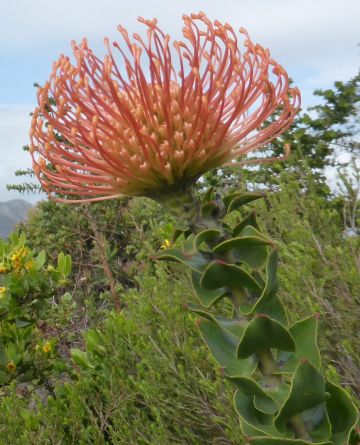
1983
Gasteria armstrongii and Euphorbia jansenvillensis were collected in the fields and planted out in the reserve.
By now 11000 Proteas had been planted and each year dead branches and old plants were removed and new seedlings planted.
1984
The cattle grid at the entrance was removed and gates installed so the place could be locked up at night.
Picnic tables were provided for the public to enjoy picnicking.
Near the start of the forest walk a number of different species of Pelargoniums were planted and the first of the labourer’s cottages were built.
The manager was very proud in 1985 to announce that all the aliens were removed apart from three pine trees that were left for birds to perch on.
On the south side over the road it was heavily infested with Acacia mearnsii which the staff eventually removed but it was a pity that Woodridge showed no interest in removing aliens.
This was also the year that the reserve celebrated its first Arbor Day.
Up to now they only had grown plants to plant in the reserve or donated to schools and offices in order conserve these plants and to rescue. Due to public demand they now started selling once a year at Arbor Day.
The garage was extended, the school was built on and electricity provided in the labourer’s cottages and the manager’s house was extended.
There was an extra dam dug next to Dodd’s dam and it was stocked with Oreochromis mossambicus (tilapia).
A controlled burning program was discussed and it was decided not to mow rows in between the Proteas anymore.
When name tags were put on the trees in the forest it was discovered that lots of trees were debarked. These died and Mary Yates suggested that the trees be painted with something to make it not worthwhile to debark. Nothing was done.
Lots of snares were discovered between 1985 and 1989. The staff needed to patrol but were very reluctant! A fence was erected around the reserve in 1989 to provide some control.
The River Walk was re-routed back to the car park.
Land across the lower bridge was donated to the reserve as compensation for development in other areas.
The vlei by the entrance and along the southern boundary of the N2 was enlarged and made deeper, unfortunately they dug through the clay layer so the water drains away quickly now.
A start was made on the information centre. Part of the money was donated by the Wild Flower Society from Mr. Long, a horticulturist who passed away and who helped the society a lot.
About 8000 Proteas were planted near the entrance.
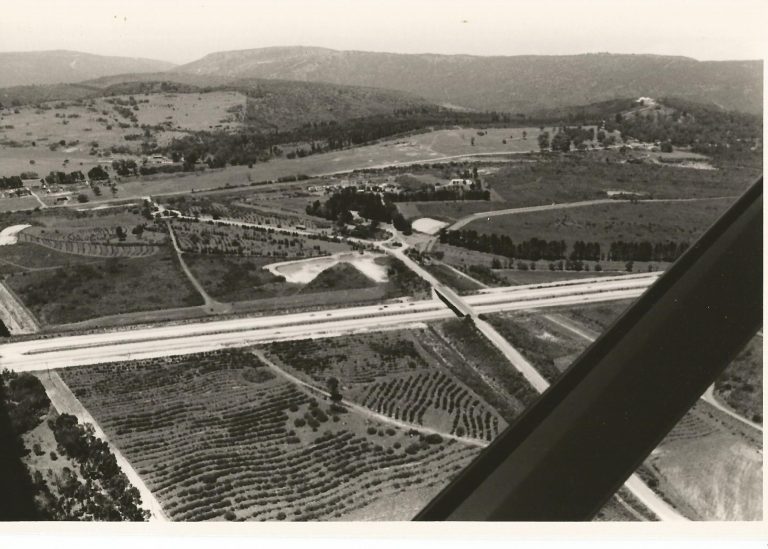
1987
In 1987 the Lower Forest Walk was completed with an exit to Dodd’s dam (now Lily Pond) and the River Walk was cleared.
1988
Fires raged in 1988 and in 1996, 2008 and 2017.
In 1988 the misting house was erected and the new nursery laid on behind the manager’s house. In June all the stock of the old nursery was moved to the new one. In 1989 the greenhouse was built.
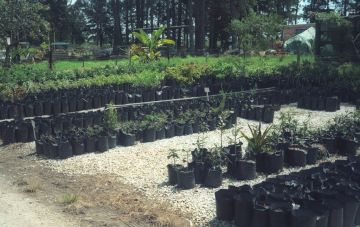
It was decided that the old nursery would be turned into an Arboretum and the Xhosa hut was built for educational purposes.
In the Arboretum they planted 23 trees and laid on 3 gardens, one with exotics, one with fynbos and one with indigenous trees.
The Xhosa hut got painted with a Xhosa design and the store room was made into a “muti” room.
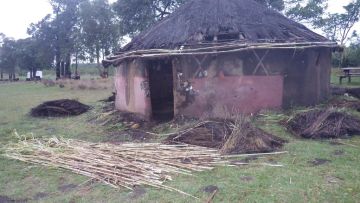
For teaching purposes benches were build around the fig tree. The dam and pipeline needed work and an arum lily bed was laid on.
1990
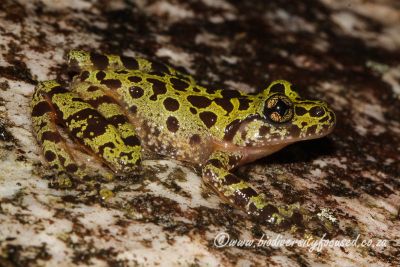
In 1990 research was done on finding the Hewitts Ghost Frog (Heleophryne hewitti) and also the Smith’s dwarf chameleon or the Elandsberg dwarf chameleon, Bradypodion taeniabronchum, which is an endangered species of lizard in the family Chamaeleonidae and endemic to South Africa.

1992
In 1992 an animal count showed 14 duikers and 8 greysbok.
Then on the 4th of June 1992 the Eastern Province Wild Flower Society erected a small plaque in the Arboretum and planted a tree in memory of Bob Nixon who had been a good friend of the reserve.
The foundation for the potting shed in the new nursery was laid.
1993
This was a busy year but it was also the last time a blesbok was seen in the reserve.
A big Pereskia stand ( block G4) by Woodridge was eradicated
Maintenance was done on the greenhouse, picnic tables were repaired and some replaced with pine ones.
Mr Alan Wood of CSIR biological Control Unit did research on beetles on Chrysanthemoides monilefera as these plants were becoming a problem in Australia.
New rules were put in place as schools now had to do their own repairs and pay for their water and electricity use.
The sign board was replaced at entrance of the reserve.
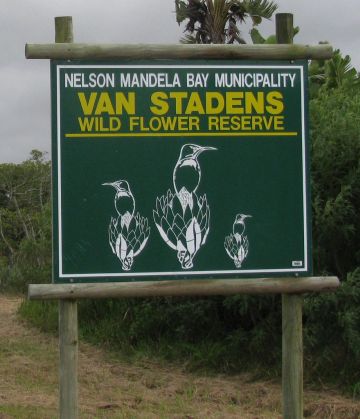
There was an effort to conserve the Sterculia alexandri by trying to grow them from cuttings but hardly any made it.
1994
The Pebble Dam near Dodd’s dam was buldozed and while walking around it was noticed that at least 50 trees were debarked!
Septic tanks were put in for the visitors toilet, the office and the flatlet.
1995
A small 80th birthday party was held for Gwen Skinner in recognition for everything she has done for the reserve.
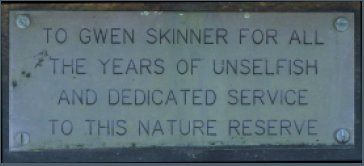
The controlled burning program was started at last but the moisture content was too high so it didn’t burn properly.
This was also the year that the rangers house in the pass got dismantled.
Dr Hannes de Lange donated 160 Cyclopia plants (though they are not the local ones).
Then there was another fire in the reserve and at Woodridge. There was also an electrical fault in a workers house which caught alight.
Modern irrigation, complete with tanks, pump and sprinklers were laid on in the nursery.
1996
The second Xhosa hut was built, with a traditional cooking area and kraal.
The abandoned reservoir in old nursery got a thatched roof to act as office for Arbor day sale. It was painted in the same Xhosa design as the educational hut.
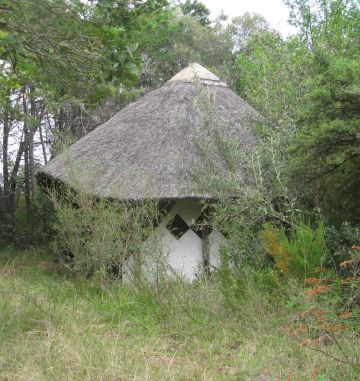
The main Xhosa hut was completed for education. The display hut and abaqweta hut were to be started in October.
1997
There was a big management problem with the many aliens coming up after the fire, they didn’t know how and if they would be able to eradicate them all!
A badger (Mellivora capensis) was sighted in the reserve
Gwen Skinner laid on first nature trail in Port Elizabeth, the Forest Trail.
Thirty years prior she had explored it bushbashing together with “Pine” Pienaar and Jim Stephaans.
There was a suggestion to make a picnic spot at start of forest trail but lack of money prevented this.
It was also noticed that the Widdringtonia cedarbergensis were dropping their first seeds though none came up.
1998
The raised platform was built in the new nursery to display plants for sale. The old ambulance depot across the entrance was converted into a crèche.
It was discovered that approximately 150 trees are debarked in the forest.
Tsitsikamma traditional healers strongly opposed the destruction but trying to visit the traditional healers was no use as the organisation was too unreliable.
The staff was supposed to do fence patrol but scared of the tree debarking people.
Law enforcements doing patrols, some arrests were made but no real breakthrough was made!
1999
In 1999 there was a big fire in front of the conference centre and soon after that Yellowwoods wanted to buy the reserve!
Luckily there was some good news as the Albany museum donated information boards for the Xhosa huts.
2000
In 2000 some more work was done on the aviary like fencing of raptor center, graveling, erecting perches .
The reserve was told about the implications of running a rehabilitation center after that it was decided to close it.
